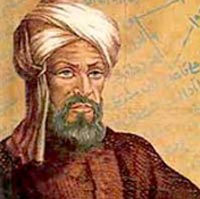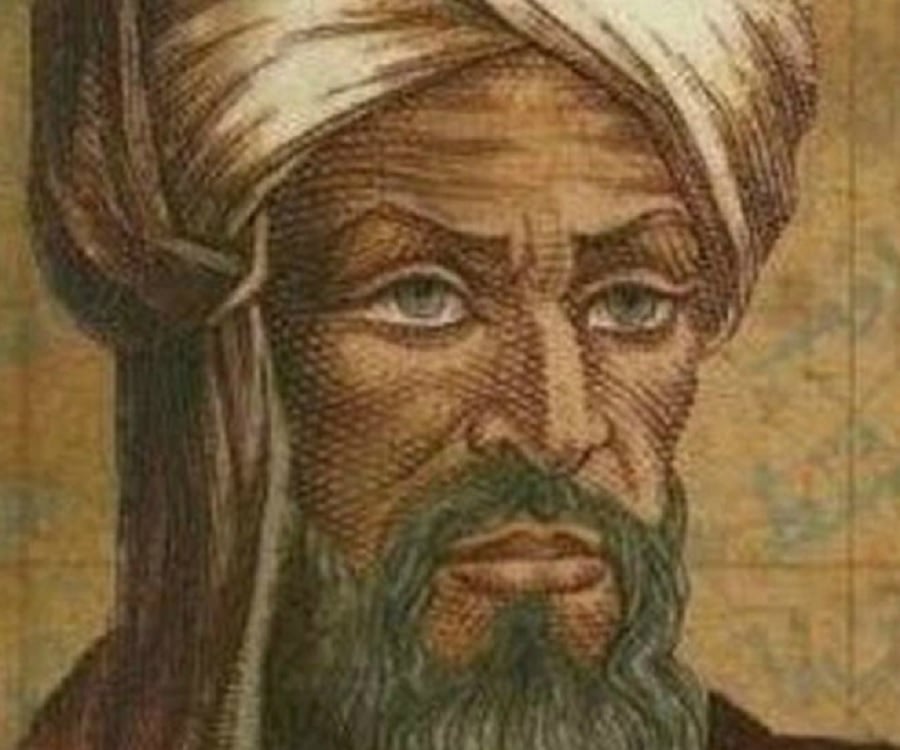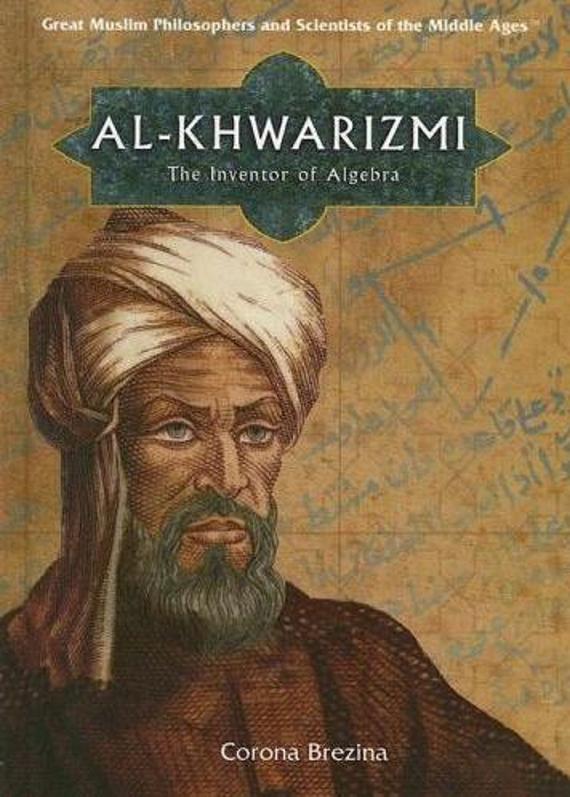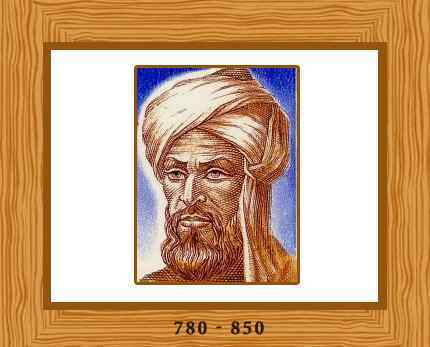Muḥammad ibn MÅ«sÄ al-KhwÄrizmÄ«
Abu Ja'far Muhammad ibn Musa al - Khwarizmi, Var. Chwarazmi, (Arabic: أبو جعفر محمد بن موسى الخوارزمي, DMG Abū Ǧa ʿ far Muḥammad b Musa al - Ḫwārizmī, Var al - Ḫwārazmī, .. * 780, † between 835 () and 850? ) Was a choresmischer polymath, mathematician, astronomer and geographer during the Abbasid heyday, who spent most of his life in Baghdad, where he was in the "House of Wisdom" active. From its name the term algorithm is derived.
Life
The birth and death year al - Chwarizmis are not precisely known, but the librarian Ibn an - Nadim writes about him that he was choresmischer origin (wa - aṣlu -hu min Ḫwārizm ). He has most of his life in Baghdad, the capital of the Abbasid Caliph spent. His main activity occurred in the years 813-833; He was a member of the " House of Wisdom " (Bait al - Hikma ) of the Caliph al - Ma'mun and wrote all his works in Arabic. As the only him, the historian al-Tabari also the Nisba " al - Madschūsi " attributes. It is concluded by some that he had been Zoroastrians, whatever was possible at the time for a man of Iranian origin. However, the preface suggests to his master algebra book that he was an orthodox Muslim, and so can at- Tabari's Note not mean much more than that al - Chwarizmis ancestors, or maybe he even in his youth, were Zoroastrians.
Al- Khwarizmi is considered one of the greatest mathematicians, because he - unlike, say, Diophantus of Alexandria - not concerned with number theory, but as an elementary algebra test form. He also made significant contributions as a geographer and cartographer, this also by translations from the Sanskrit and Greek.
The first Latin translations of his algebra were Robert of Chester ( 1145 ) and independently later made in Spain by Gerard of Cremona.
Works
Mathematics
In his work Kitāb al - ʿ wa-l - Djam tafriq bi- Hisab al - Hind ( "On the Calculation with Hindu numerals ", 825 ) presented al - Khwarizmi working with decimals before and led the digit zero (Arabic: sifr ) from the Indian in the Arabic number system and hence in all modern number systems. The Latin version of this document was entitled Algorismi de ... ( " The work of al - gorismus about ... "). This led to the term " algorithm ", are meant by the generally well-defined computational procedure. The Arabic original version of this book has been lost; it was preserved only in a Latin translation.
In the year 830, he completed the work from the book Kitaab al - on muchtasar Hisab fi al - dschabr wa-l - muqabala ( "computing by complementing and balancing "). It is a set of rules and examples. His - unusual for that time - systematic logical approach gave the solutions of linear and quadratic equations a completely new direction, namely the geometric processing of these equations, which leads to a new form of understanding of the task class. This " pictorial " representations of mathematical problems makes the subject not only tangible, but leads to a kind of knowledge acquisition, which is far more comprehensible for " laymen ". Thus, the performance consists in the fact that he has created a very efficient mathematical "tool". The book was several times translated into Latin from the 12th century; while the term " algebra " from the title of this work (al- ǧabr ) was derived. It had great influence on mathematics in the Middle East and also to the further development in the West.
Astronomy
Al- Zij al - Chwarizmis Sindhind (Arabic: زيج, " Astronomical Tables of Sindhind " ) was comprised of about 37 chapters in which he described astronomical and calendar calculations. It contained 116 calculation tables, among whom was also a table of values of the sine function. The knowledge that wrote al - Khwarizmi in the book Zij al - Sindhind, he took over the large part of the Indian astronomers, after which the title Zij al - Sindhind points ( Sindhind comes from the Sanskrit Siddhanta for textbook or treatise and Zij is the Islamic in the world common name for an astronomical teaching and panel work ). The book Zij al - Sindhind presented an enormous gain of knowledge for the Arab astronomers dar.
Al- Khwarizmi wrote the book Zij before the year 828, the original manuscript has been lost. Narrated was a written around the year 1000 version of the Spanish astronomers Maslamah ibn Ahmad al - Madschriti in Latin translation by Adelard of Bath. The four surviving manuscripts of this version will be in the Bibliothèque publique in Chartres, Bibliothèque Mazarine in Paris, the Spanish National Library and kept the Bodleian Library in Oxford.
Due to the bad tradition is not ascertained whether al - Khwarizmi has not written two books under the title Zij.
Geography
Another major work al - Chwarizmis is the book on the image of the Earth ( كتاب صورة الأرض, Kitaab Surat al-ard ), which he finished in the year 833. This is a revised and expanded version of Ptolemy Geography ', which contains a list of 2402 coordinates of cities and other geographical locations. There is only one extant copy of the work in the Bibliothèque nationale et universitaire de Strasbourg; edited it was Hans von mzik (Leipzig 1926)
Other Publications
Al- Khwarizmi also dealt with the Jewish calendar ( Istichradsch Tuarikh al - Yahud ), calendars general ( Kitab at- Tuarikh ) and sundials ( Kitab ar - Ruchmat ). The trigonometric tables created by him had a great influence on the development of Western mathematics.
Honors
In the Soviet Union, a postage stamp was issued in 1983 with his portrait. In Khiva (Uzbekistan), a monument to him was erected in honor. In Tunisia, a public research institute bearing his name. In Iran there are more than 40 years the "Festival Kharazmi " (Persian: Dschaschnvare -ye Charazmi ) will be awarded in the prices for innovative research on young people. On the moon back of a crater to al- Khwarizmi is named.



.png)






